Marketers strive to keep up with the new trends and stay relevant. The infusion of new marketing campaign ideas keeps everyone on their toes.
While some players have FOMO, others want to explore new marketing avenues. However, both types of marketers have the same purpose: to reach more people.
This is where creative marketing comes in. Brands, influencers, and digital marketers try out new, innovative marketing ideas to attract, engage, and convert the target audience.
Let’s explore different creative marketing campaign ideas, but first, understand what a marketing campaign is.
What is a marketing campaign?
A marketing campaign is an effort to create awareness about a product or to promote an offer to sell the product. Marketers use traditional, online, and social media marketing techniques to run a marketing campaign.
A marketing campaign can include different types of marketing, such as Instagram posts, Google ads, and pamphlets—there is no harm in mixing multiple types of marketing techniques.
The goal is to reach the relevant people no matter where they are and how you reach them. That’s the prime objective of a marketing campaign.
Let’s take a look at a few examples of a marketing campaign:
Shopify’s Facebook ad
Shopify is a popular ecommerce platform that powers millions of online stores worldwide. They have a diverse marketing campaign as they use social media ads, influencer marketing, and PPC networks to promote their product.
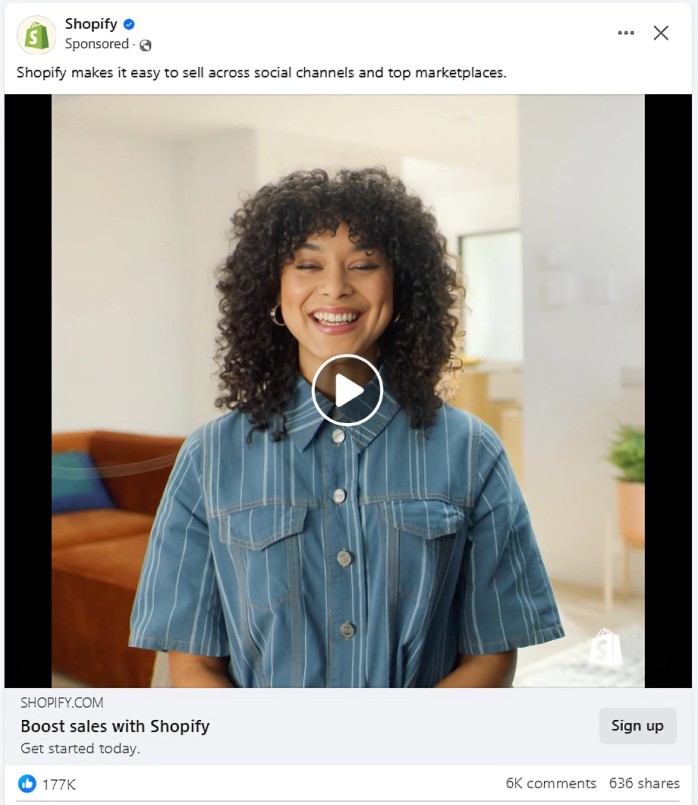
Not only do they put out organic social media content on different social platforms, but they also run ads across different social networks. One of their Facebook ads caught our attention, which shows how serious they are with their marketing campaign.
Sunny Lenarduzzi’s YouTube channel trailer
Sunny Lenarduzzi is a business coach and entrepreneur who has earned millions of dollars and gained hundreds of thousands of subscribers on YouTube.

She uses the YouTube channel’s trailer to showcase her business profile. The current channel trailer is the video about her online course that makes over $5 million per year.
So, both of these are examples of marketing campaigns. Brands and influencers use dozens of other creative marketing campaign ideas that you’re about to explore in this very article.
Benefits of social media automation
Today’s marketing realm stands on several pillars, and one of those pillars is social media marketing. Social media automation is an essential element of social media marketing. Take a quick look at some of the benefits of social media automation:
Streamlines social media management with an all-in-one dashboard
As businesses grow, manually handling social media becomes challenging. Social media automation makes it easier to scale marketing efforts without hiring additional team members.
Brands, influencers, and agencies can increase their posting frequency, reach a larger audience, and manage engagement more efficiently using an all-in-one social media dashboard like ContentStudio.
Saves time and energy by eliminating day-to-day publishing
Social media automation allows businesses, creators, and influencers to schedule social posts in advance, eliminating the need for manual posting every day. This frees up valuable time, which can be spent on crucial tasks such as topic research, content creation, audience engagement, and social analytics.
By automating repetitive processes such as social media publishing, social media teams can focus on growing their brand rather than managing routine social media activities.
Social Media Content Calendar
Stay consistent and organized with Contentstudio’s social media content calendar for marketers and agencies.
Get Started for FREE
Provides consistency in social media posting across all channels
A consistent posting schedule is crucial for maintaining audience engagement and brand credibility on every social media platform. Social media automation helps in providing a consistent flow of content across all social channels, allowing platforms to suggest optimal times for publishing.
As a result, consistent publishing improves brand awareness and keeps the audience engaged with fresh and relevant content.
Improves overall social media engagement
Social media engagement works as a fuel to social media growth. Scheduling interactive posts and using automation helps businesses stay active even during off-hours.
Many chatbots and automation tools allow creators and businesses to set up auto-replies, respond to frequently asked questions, and send instant replies, keeping the audience engaged. This strategy fosters better relationships with customers and followers.
Social Customer Service
Never miss a message or comment from your social media audience. Try ContentStudio’s Inbox.
Get Started for FREE
Give insights into essential data through analytics
Most social media automation tools come with built-in analytics that provide insights into post performance, audience behavior, and engagement levels. These insights help social media creators refine their content strategy by identifying what works best.
ContentStudio has a social media analytics section that provides a deep dive into data analytics, allowing users to discover what pieces of content resonate with the audience and what posts aren’t getting any traction.
Social Media Analytics
Fine-tune your social media strategy for success with in-depth analytics and white-labeled reports.
Get Started for FREE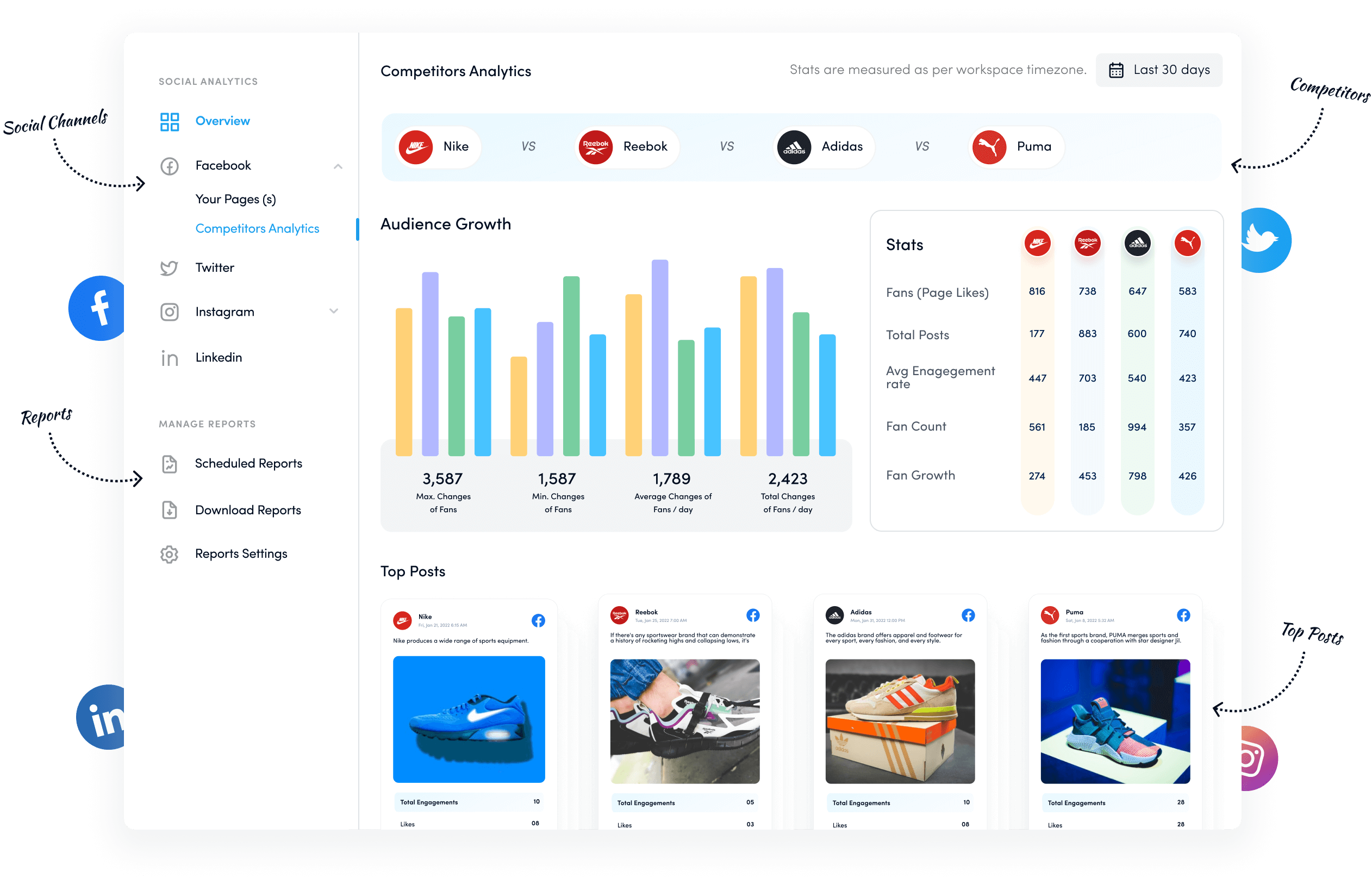
Helps manage multiple brands or clients’ accounts
One of the challenges social media managers face is managing multiple social media accounts, especially if they’re managing manually.
This is where social media automation can come in handy. Most social media automation tools assist users in managing multiple clients or brands under the same umbrella. ContentStudio has a Workspace feature that makes it easier for users to manage multiple brands or clients without switching the dashboard.
Minimizes errors in maintaining a brand voice
Brand voice means the tone, style, pattern, and formatting a brand follows everywhere. When posts are scheduled in advance, there is more time to proofread content and ensure it aligns with the brand’s tone and messaging.
Social media automation helps avoid last-minute errors, inconsistencies, or missed posting opportunities. Therefore, a well-planned automation strategy ensures that every post meets the brand’s quality standards before it goes live.
20+ marketing campaign ideas
Digital marketing is a diverse landscape full of opportunities for brands and creators. There are countless ways to reach out to the audience. However, the only way to make an impact inside all that noise and clutter is to deliver value through your message.
Here are some of the best marketing campaign ideas to use to spread the word about your brand in 2025 and beyond:
1. Affiliate or referral program:
Setting up an affiliate program allows companies to encourage customers and partners to promote their services and products by offering commissions or rewards for each successful referral. This builds a loyal community while driving sales.
For instance, ContentStudio offers an affiliate program that provides affiliates a 30% recurring commission for the first year.
2. Giveaway contest:
Who doesn’t want freebies and giveaways? Giveaways are a great way to boost engagement and brand awareness. Try hosting a contest where participants enter for a chance to win a free product or service. This encourages sharing, following, and interaction.
Example: YouTubers run giveaway contests to boost engagement and gain more followers. This is a tried-and-tested YouTube growth hack.

3. Guest posting:
Guest posting is an underrated marketing strategy involving publishing content on others’ blogs. Expand your reach by writing valuable content for other blogs or websites in your industry. This helps drive traffic to your site and establishes you as an authority.
Here’s an example: Many publications use a “Write for us” page to invite guest posters to their sites.

4. Sponsored posts:
Sponsored posts are an excellent way to get traction from high-traffic blogs and social media accounts. Promote your brand by paying influencers or media outlets to feature your product or service in their content. It massively increases brand visibility and credibility among their audience.
For instance, Alfie Deyes is a British vlogger who works with different brands. BetterHelp is a wellness and therapy platform that sponsors his videos.

5. Podcast interview:
Reach out to the podcasts in your niche and explain what you have to offer their audience. You can also cross-promote their podcasts on your social channels. Gain exposure by appearing on industry-related podcasts to share insights, experiences, and expertise. This positions you as an authority while reaching a highly engaged, relevant audience.
Example: The Fellas is a popular YouTube podcast that invites guests to discuss YouTube, life, business, and the creator economy.
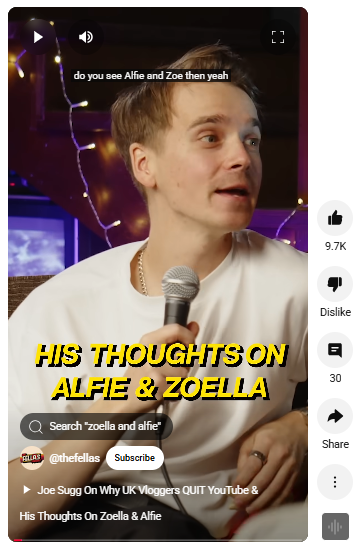
6. Live stream session:
Live streaming on YouTube, Instagram, and TikTok has already taken the social media world by storm. Connecting with your audience in real-time can be a great marketing strategy. Experiment with Q&A sessions, product demos, or behind-the-scenes content in the live streams.
Example: English Jade is a British YouTuber and English-speaking coach. She uses live streaming on YouTube as a creative marketing strategy, which works for her.

7. Reviews or testimonials:
It won’t hurt to infuse customer reviews and testimonials on your sales pages. Showcasing positive feedback from satisfied customers or influencers helps build trust and social proof. Authentic testimonials can influence potential buyers’ decisions in the brand’s favor.
For instance, AffiliateBooster is an affiliate marketing plugin that shares testimonials from industry experts.

8. Video post:
Don’t underestimate the power of video content, especially on social media platforms like TikTok, Instagram, and YouTube. Use engaging videos to highlight your brand story, showcase products, or share valuable insights. Video content grabs attention and increases social media engagement.
Example: Rihab Seb is an ecommerce coach who uses video content to market her services. Take a look at her YouTube channel:
9. Paid email newsletter:
Email marketing has become an essential channel for influencers, marketers, and startups. Use premium, niche-specific email newsletters to advertise your brand and reach a targeted audience. This is an effective way to gain high-quality leads and boost conversions.
For instance, Chris Bibey has a popular email newsletter about content writing gigs. He gets email newsletter sponsorships regularly.

10. Messenger chatbots:
AI Chatbots are the new normal. Automate customer interactions with AI-powered chatbots on websites, Facebook Messenger, Instagram, and other platforms. These provide instant responses, guide users, and improve customer experience.
Example: Follow.it uses an AI-powered chatbot to provide live chat assistance to its customers.
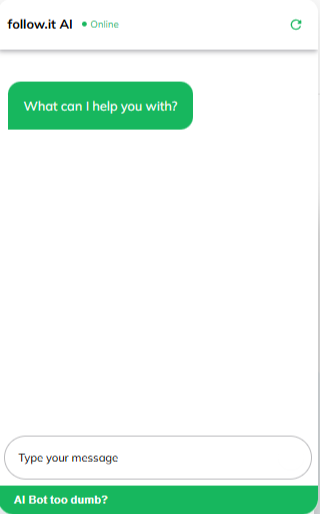
11. Automated DMs:
One of the best social media engagement strategies is to create direct messages via Instagram. Set up auto-reply messages on social media channels (like Facebook and Instagram) to welcome new followers, share exclusive offers, or provide quick support. It’s a great way to keep the engagement high and nurture leads.
Example: Cryptosityclub is using the automated DM strategy to engage users. Many Instagrammers use automated DMs to engage the audience. They use some kind of lead magnet to entice the audience to take action.
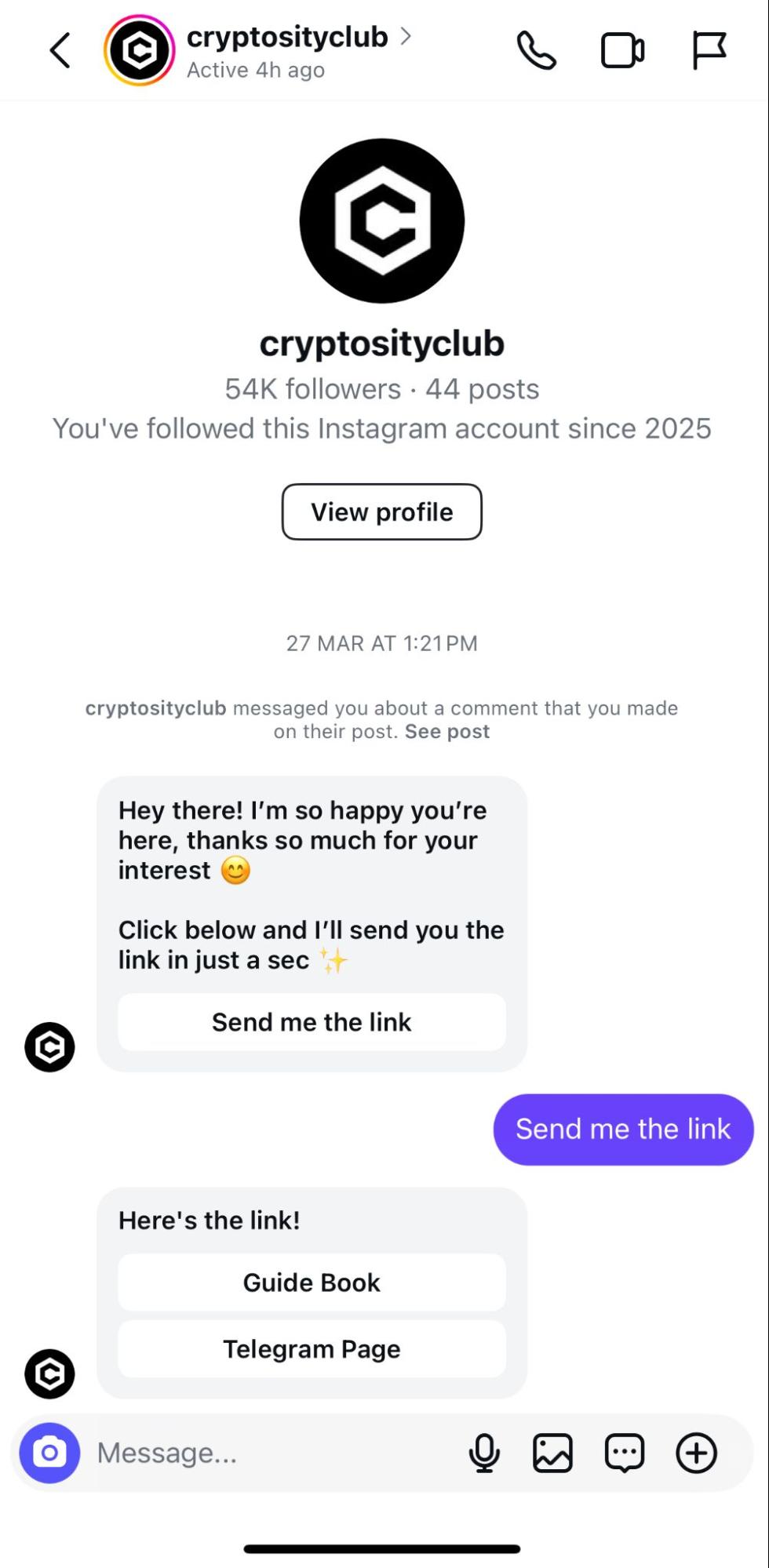
12. Meta ads:
Social media ads are a vital marketing tool in the digital marketing arsenal. Brands, influencers, and agencies know how to run targeted ad campaigns on Facebook and Instagram to reach specific audiences based on their interests and behaviors. No wonder these ads drive brand awareness, leads, and sales for them.
Example: Coursiv’s meta ads campaign focuses on AI education. The platform’s primary purpose is to educate users on using artificial intelligence effectively.

13. Influencer takeover:
Influencer account takeover isn’t something we see every day, but it’s still popular in some niches. The way it works is that companies allow an industry influencer to take over their social media channel for a day to engage their audience. As a result, it boosts credibility and introduces your brand to a new audience.
Example: Isla and Ellen work in Bournemouth University, UK’s Future Student Inquiry team. They took over the university’s Instagram account for a live Q&A.

14. X (Twitter) Q&A:
Host a live question-and-answer session on X (Twitter) to interact with followers and address their queries. It provides existing followers and new audiences to interact with the influencer or brands, which brings attention and engagement to the profile.
Many actors and celebrities do Twitter Q&A. For instance, Mahira Khan, a prominent Pakistani actress, often hosts Q&A sessions on Twitter.

15. Branded hashtag:
Promote a branded hashtag to entice the target audience on X (formerly Twitter). Create and promote a unique branded hashtag to encourage user-generated content and brand conversations. It increases brand visibility and community engagement.
For instance, Samsung US uses specific branded hashtags across social media, especially on X (Twitter).

16. Reel/Short video:
Don’t sleep on the vertical video opportunity. Leverage short-form videos on Instagram Reels, TikTok, and YouTube Shorts to showcase products, share tips, or entertain your audience. These vertical videos boost reach and engagement.
For instance, Instagram influencers pay close attention to vertical videos, whether Reel, Shorts, or TikTok.

Also read: YouTube Shorts vs Instagram Reels: A complete comparison
17. YouTube channel trailer:
A YouTube channel trailer is the featured video that shows up on the homepage of a YouTube channel. YouTube channels also use the channel trailer to highlight their latest video. So, try creating a compelling channel trailer that introduces your brand and content to new visitors. It’ll help in converting viewers into subscribers.
Example: Life With Hamid is a YouTube channel that uses this channel’s trailer strategy. Take a look:
18. YouTube channel branding:
One of the ways to market your brand or product is through YouTube channel branding. Design professional channel art, such as cover banners, thumbnails, and intros, to create a consistent and recognizable brand identity.
Example: Chad Kimball is a YouTuber who talks about money making online. He knows how to do YouTube channel branding, whether it’s the cover, thumbnails, or display picture – he has sorted everything out.
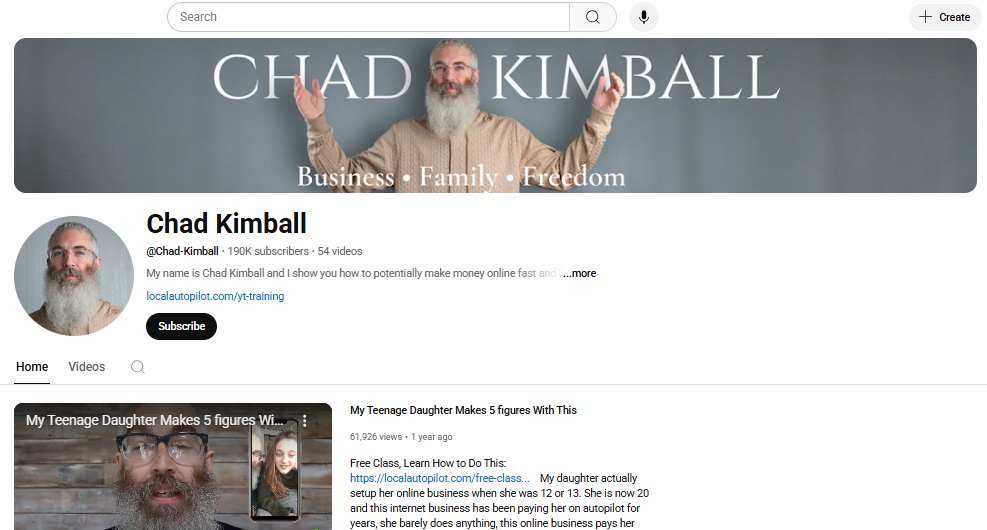
19. Collaborations:
Partner with brands, creators, or businesses in your niche to co-create content, products, or promotions. This expands your reach and adds value to both audiences. Use third-party influencer marketing platforms to reach out to the influencers.
Example: Zoe Sugg is a popular British blogger and YouTuber with millions of followers on social media. She often collaborates with brands. Here’s an example:

20. Free webinar:
Host an educational webinar to share insights, demonstrate expertise, and engage potential customers. This builds trust, can generate leads, and brings new eyes to the brand.
For instance, the team at ContentStudio occasionally hosts free webinars on product updates, social media content creation, and digital marketing.
21. Retargeting campaign:
Retargeting is a marketing tactic that uses targeted ads across social media and search platforms to reengage visitors who have interacted with your brand in the past. The purpose of retargeting campaigns is to increase conversions and maximize ROI.
For instance, if you visit the Shopify website, you’ll see its ads across social media. Shopify aggressively retargets the audience that visits its website.
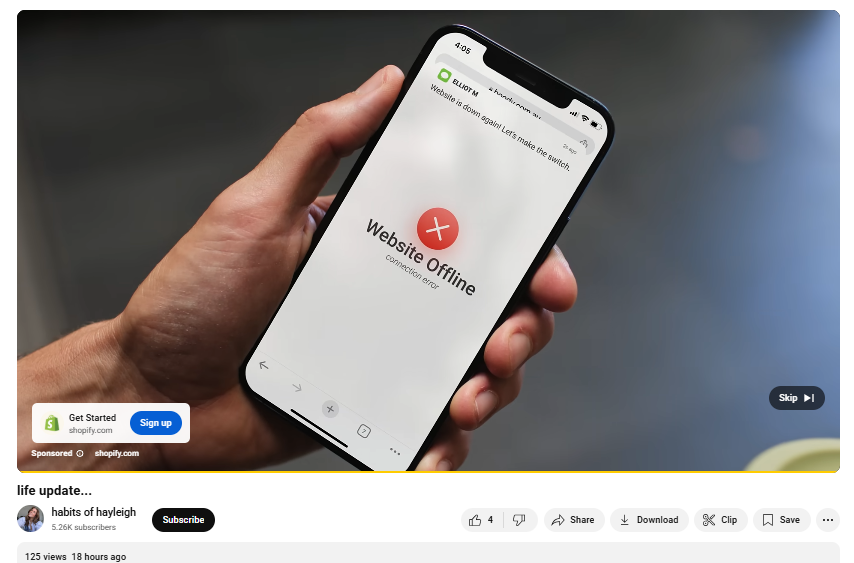
22. Custom short domain:
Use a branded short link for marketing campaigns and social sharing to improve credibility and tracking. This enhances brand recognition and click-through rates.

ContentStudio lets users configure a short branded domain to share links across all social media platforms. All you have to do is integrate your account into a URL shortener, such as Replug.
So, these are some of the many marketing campaign ideas you can try out for your brand.
Key components of a successful marketing campaign
A successful marketing campaign is based on several pillars supporting the overall structure. Let’s break down a few essential marketing campaign components that differentiate a successful marketing campaign from a failed marketing campaign:
Figure out the niche brand that falls in
Understanding the niche is a fundamental step to establishing a powerful marketing campaign. It seems a mere concept, but it does the groundwork for creating the campaign. Once the niche is identified, you’re on the right track. The next step is navigating toward the destination.
Build a marketing strategy.
Another key component of a successful marketing campaign is establishing a marketing strategy. This usually involves creating a marketing roadmap that lists each step to be taken. Moreover, a marketing strategy encapsulates how a brand chooses to engage the audience and showcase its products/services. Most brands prioritize social media, email marketing, and online advertising in their digital marketing strategy.
Pick social media platforms to focus on
Social media is an essential part of any marketing strategy. However, every brand or influencer may opt for different social media platforms, depending on the nature of the product or industry. Therefore, it’s vital to pick the right social media platforms to focus on to drive the marketing campaign effectively.
Sign up for a social media dashboard.
One important step when building a powerful marketing strategy is to set up a social media management dashboard to streamline social media publishing. This dashboard lets you create, post, schedule, and analyze social media content across all major social media platforms. ContentStudio is an all-in-one social media dashboard for brands, influencers, and agencies. It offers a 14-day free trial!
Brainstorm on the audience demographics.
Pay close attention to your audience demographics, such as age, gender, location, and others, as they help identify and target the relevant segment of the population. Brainstorm the audience demographics and wisely choose who to target with your marketing campaign to make it more efficient and profitable.
Monitoring the marketing campaign performance
It’s vital to keep track of all the marketing indicators that tell us how the campaign is performing. These indicators can vary from brand to brand or industry to industry. However, the common ones are clicks, impressions, leads, click-through rate, conversion rate, etc. Every marketing analytics tool, whether a social media scheduling tool, email marketing software, or website analytics dashboard, is essential. Monitor the campaign’s data closely.
These are some of the key components of a successful marketing campaign.
Bonus tip: Use ContentStudio to run a successful social media marketing campaign
Are you ready to take your social media marketing to the next level? Well, you need an all-in-one tool that assists in creating, publishing, scheduling, and analyzing social media content.
ContentStudio is an advanced social media management tool offering social media publishing, content scheduling, analytics, AI writing, workflow approval, team collaboration, multiple client management, custom URL integration, and more.
This social media dashboard can run a successful social media marketing campaign for several reasons, such as:
- It lets users publish and schedule social content across all major social media platforms like Facebook, X, LinkedIn, Pinterest, Instagram, and TikTok
- It assists users in posting blog content on platforms like Medium, Tumblr, and WordPress
- AI Assistant provides copywriting, hashtag generation, and image creation solutions to skyrocket social media content publishing
- The influencer discovery section ensures that brands can find relevant influencers across the Instagram and Facebook platforms
- The analytics section gives a deep dive into social media content performance and helps in monitoring overall content performance across multiple social platforms
- Social inbox ensures that users can access and respond to social media comments and inbox messages right from the ContentStudio dashboard
- Workspaces let users manage multiple brands or clients without having to create multiple ContentStudio accounts
So, that’s how ContentStudio is a handy tool in the social media marketing arsenal.
Conclusion
Creative marketing campaign ideas are everywhere. We don’t have to reinvent the wheel; instead, we can pick and choose the ones that suit us.
For instance, if a photography business doesn’t have an Instagram following, it is missing out on many business opportunities. This company might not necessarily need Twitter and LinkedIn accounts because those platforms aren’t relevant to its niche. Its potential audience is likely to hang out on Instagram.
We shared many marketing campaign ideas to ensure everyone gets something out of it. Every marketing strategy doesn’t work for everyone. It all comes down to handpicking the ones that seem more suitable and relevant to the business.
Simplified social media marketing for individuals & agencies.
Try ContentStudio for FREE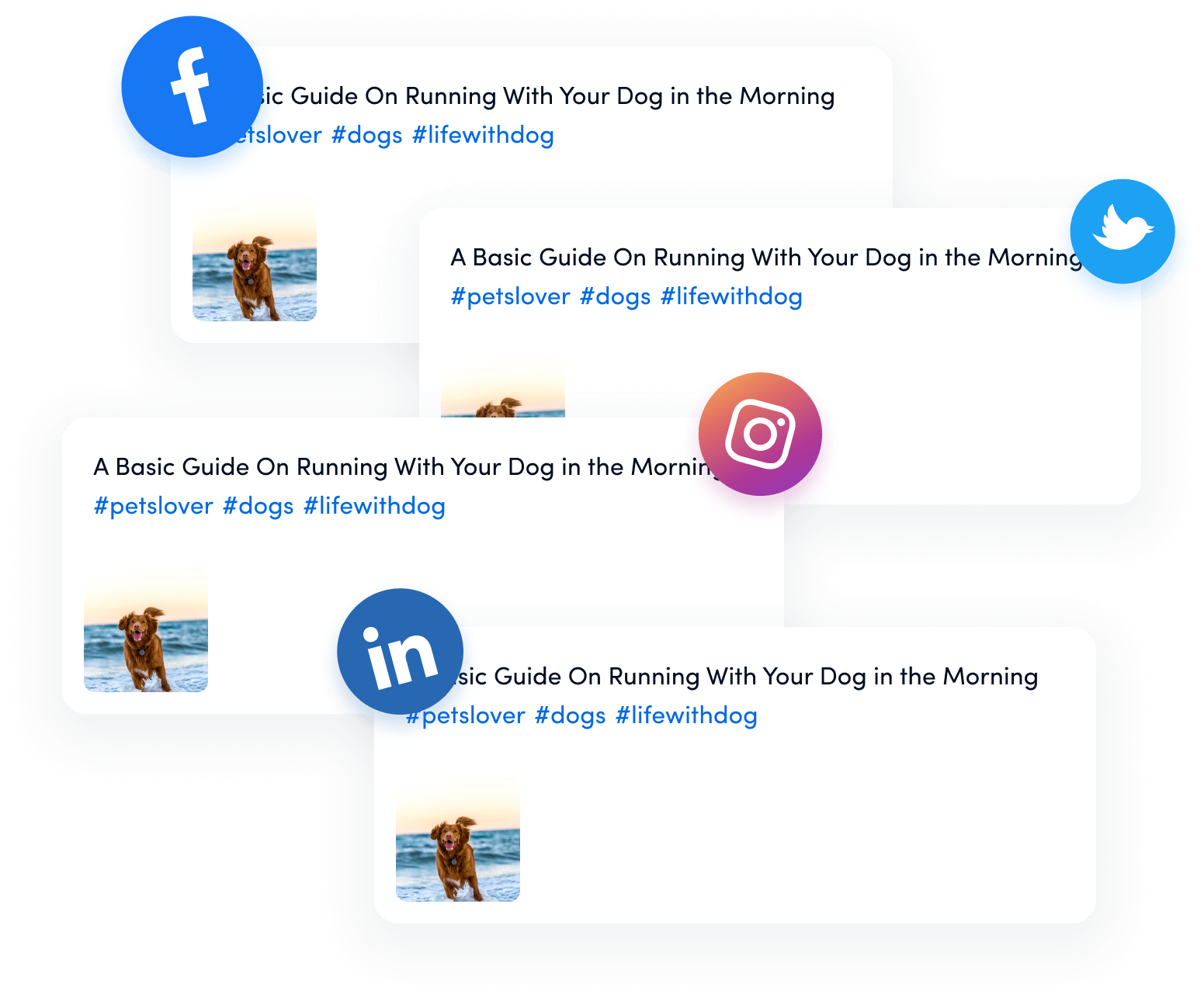
FAQs
Let’s take a look at some of the common questions related to the topic:
What are the top marketing ideas for small businesses?
Social media marketing is the best way for a small business to market its product or service. A small business can create relevant content, build an audience, and convert followers into paid customers. Other digital marketing methods, such as paid ads, email marketing, and influencer marketing, can also help.
What are some out-of-the-box ideas for creative marketing?
Out-of-the-box marketing ideas are unique, attention-grabbing ways to connect with your audience. These include social media challenges, user-generated content, pop-up events, teaser campaigns, surprise giveaways, and AR filters. The goal is to offer fresh, memorable experiences that reflect your brand’s personality.
How do I choose the right marketing campaign idea for my brand?
Start by understanding your brand’s goals, target audience, budget, and marketing channels. Evaluate ideas based on how well they align with your brand’s identity, resonate with your audience, and suit your available resources. Test different approaches and track their performance to see what works best.
Can small businesses run creative marketing campaigns on a limited budget?
Absolutely! Creativity isn’t about spending big — it’s about thinking differently. Small businesses can use social media challenges, referral programs, user-generated content, giveaways, and collaborations with micro-influencers to create impactful campaigns without breaking the bank.
